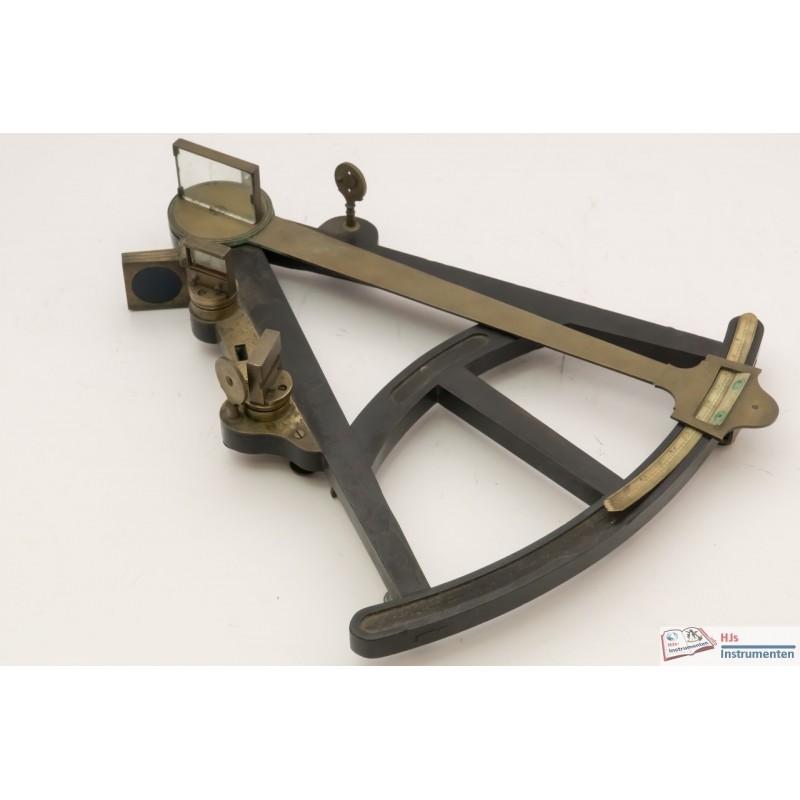








Product details: Hadley style octant | | Octant | Navigation | Material: Wood
This ebony octant is in a sorry state where the ivory parts are concerned. Pencil, makers plate, half the scale and the notepad on the back are all missing. Only the vernier has survived completely as far as the ivory parts are concerned. Notwithstanding that it is an interesting instrument as apart from the ivory everything else is there and complete. This type of octant is also sometimes called the 'three mirror' or Hadley style sextant as it is the original form. It is not one of the really early days as those were much larger than this one is but it still is probably over 200 years old.
What sets this apart form the more modern octant (also in my collection) are a few things. The most obvious is the 'third' mirror that is no longer present on more recent octants and sextants. This mirror was for taking backsights i.e. with the back towards the sun. The third (bottom) mirror is a horizon mirror where there is a strip of unsilvered glass in the middle rather than on the top of the mirror allowing the observer to look at the horizon. The other two parts of the mirror are directed towards the index mirror which provides an image from behind the observer (the backsight). This was the customary procedure before the octant as with the backstaff. In later models it has gone as the regular horizon mirror can do the job just as well.
The octant is undated but based on its characteristics it is probably from somewhere between 1800 and 1820 or possibly a little younger or older. I base this on the clamp on the index arm; from 1820 onwards sextants were equipped with a tangent screw for slow movement which is missing on this one. The backsight also makes it an older model whereas the vernier, which runs from right to left to a total of 20 minutes, makes it younger than the late 18th century. Finally there is only a peepsight available and no fitting for a telescope. The filters can be moved from the top position in the photographs to the bottom slot without having to unscrew them. It seems that the mirrors have been replaced at a later date (or have survived amazinly well, something that defies belief).
More information / other collections:
Data sheet
You might also like